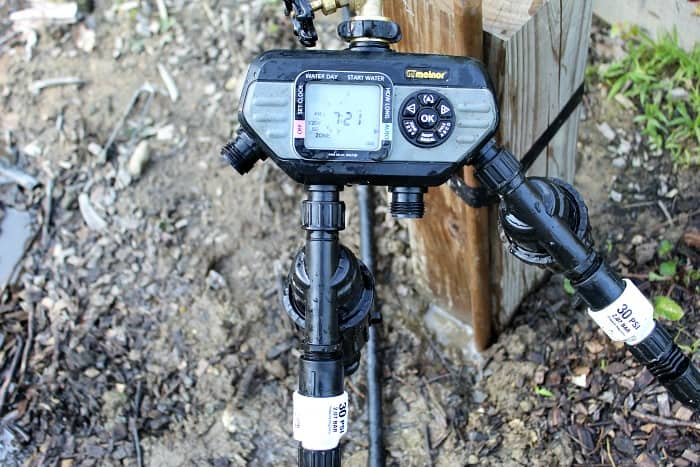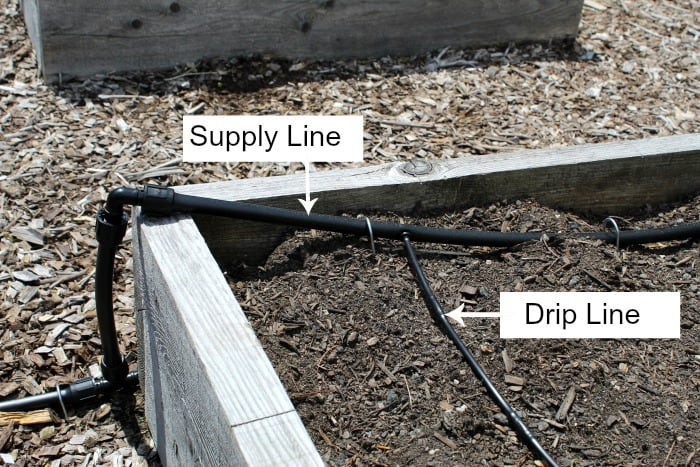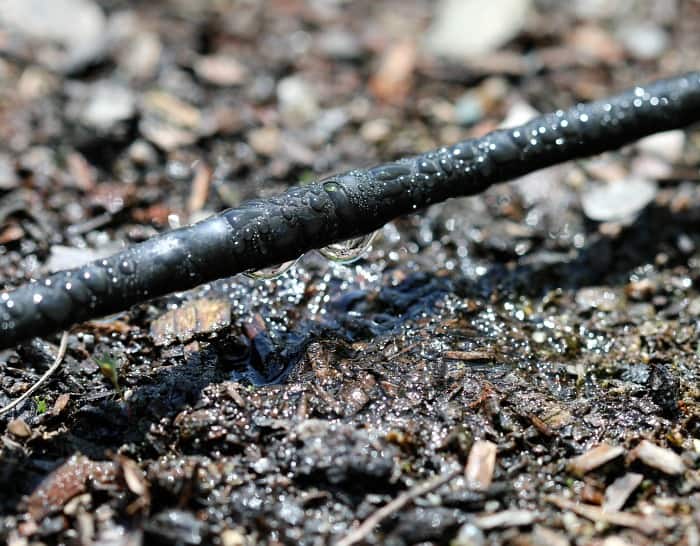If you’re looking for a better way to irrigate plants and vegetables then consider the advantages of drip irrigation.
What Is Drip Irrigation?
Drip irrigation is an irrigation system that emits small drops of water directly to the root zone of the plant.
Advantages
1. Reduced Water Usage – By directly targeting the root zone, water isn’t wasted on areas that won’t benefit the plant.
2. Healthier Foliage – Overhead watering means the leaves of the plant stay wet long after irrigating. Wet leaves causes discoloring and spotting. With drip irrigation, the plants leaves remain dry.
3. Prevents Fungus – Wet leaves can cause fungus to spread. Drip irrigation keeps foliage dry and prevents fungus.
4. Prevents Soil Erosion – Drip irrigation is a gentle, steady drip and reduces the amount of runoff, therefor reducing soil erosion.
5. Reduces Weeds – Since areas in between the plants won’t be receiving water, weeds are less likely to grow.
6. Nutrient Runoff Minimized – When there’s a large volume of water running off the soils surface it depletes nutrients in that soil. Since drip irrigation reduces runoff it reduces the loss of nutrients.
7. Doesn’t Require Lot Leveling and Drainage – Typical irrigation setups leave a lot of water on the soils surface. This means drainage and proper site leveling is required to prevent standing water. With drip irrigation this isn’t as necessary since less water is being used and the water is being directed directly to the root system.
8. Works With Low Pressure – Low pressure is actually good for drip irrigation. Most overhead irrigation systems require pressure tanks if there are a lot of sprinkler heads.
Disadvantages
1. Clogging – Perhaps the biggest disadvantage of drip irrigation is that the small holes along the drip lines can get clogged. Clogging is extra likely if your water contains iron. If not properly maintained, your drip line holes can clog and prevent the flow of water.
2. Requires Installation – A drip irrigation system requires some planning, purchasing of materials, and installation. This takes more effort then simply laying out a hose with a sprinkler attached to it.
3. Requires Maintenance and Oversight – You have to routinely check your drip lines to make sure they are functioning properly. Since a lot of the action is being done at the surface of the soil, it can be difficult to see problems at first glance. Drip irrigation also requires seasonal blowouts and winterizing.
How Does Drip Irrigation Work?
1. Drip irrigation starts with a simple connection to a hose or spigot that most homeowners have. Depending on the system, the connection may be a little different.
When I installed my system I connected the 2 separate zones directly to a 4 zone irrigation controller.

In the pic above you can see that 4 way controller with the 2 zones connected. Also connected to the 2 zone valves are pressure reducers which came with the kit.
2. From the zone valves you connect your main supply lines. Since the system I installed is 2 separate zones, I have 2 separate supply lines. Each supply line goes to a total of 6 raised beds.

3. Once your supply lines are run, it’s time to tap into the supply lines using a special tapping tool that comes with the kit. Once tapped, you install the drip lines (shown above). The drip lines are much smaller in diameter then the supply lines. You can tap the supply lines as many times as you need depending on the number of rows, or raised beds you have.
Best Drip Irrigation Systems
After experimenting with a couple of different systems, my favorites are the ones supplied by DripWorks (No, I don’t receive money to promote them). They have diagrams on their site that you can choose from, as well as customize to get the exact layout you want.
Once you have your layout you’ll see a clearly labeled parts form where they will tell you how much you need of each part based on your layout.
They also have helpful how to videos that will tell you specifically how to install the kit you purchased.
Lastly, I find DripWorks kits to be the easiest to install and also the highest quality. Their fittings are strong and rarely leak. Best of all most of the work is done by hand so there aren’t a lot of tools needed.
The only thing I would add is an automatic watering controller as mentioned above. These timers allow you to automate your watering so you can set it once and forget about it. If you have a busy schedule, or are going out of town you can just schedule your irrigation to go on and off while you’re away.
Check Out These Posts Next
Fall Gardening: Tips and Maintenance
Protecting Evergreens from Winter Burn
Follow Me
Join my free email list!



I like the idea of having a supply line that leads to the drip lines. I could see that being a good way to make sure that enough water flows to the far drip lines. If I have someone help me install a system like that in my garden this summer, I’ll have to keep that in mind.
It’s good to know that you won’t have water wasted in areas it isn’t needed. My husband and I were thinking about getting an irrigation system installed for our lawn so that we can save time on yard work, and we were wondering what type would be best. I really appreciate you helping me learn more about the benefits of having a drip irrigation system. We’ll have to look into getting one installed for our home.